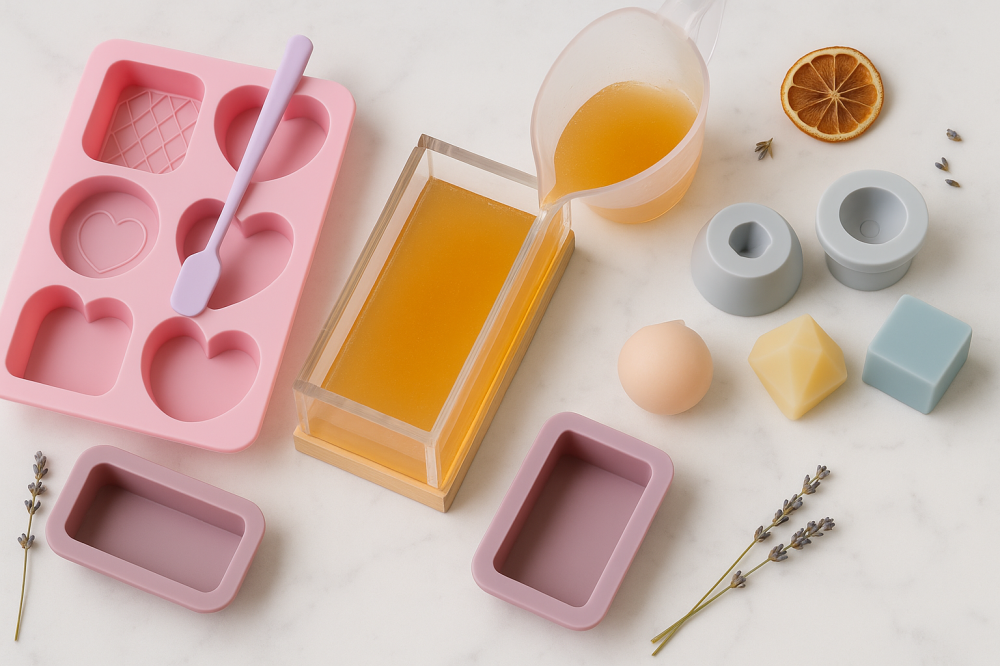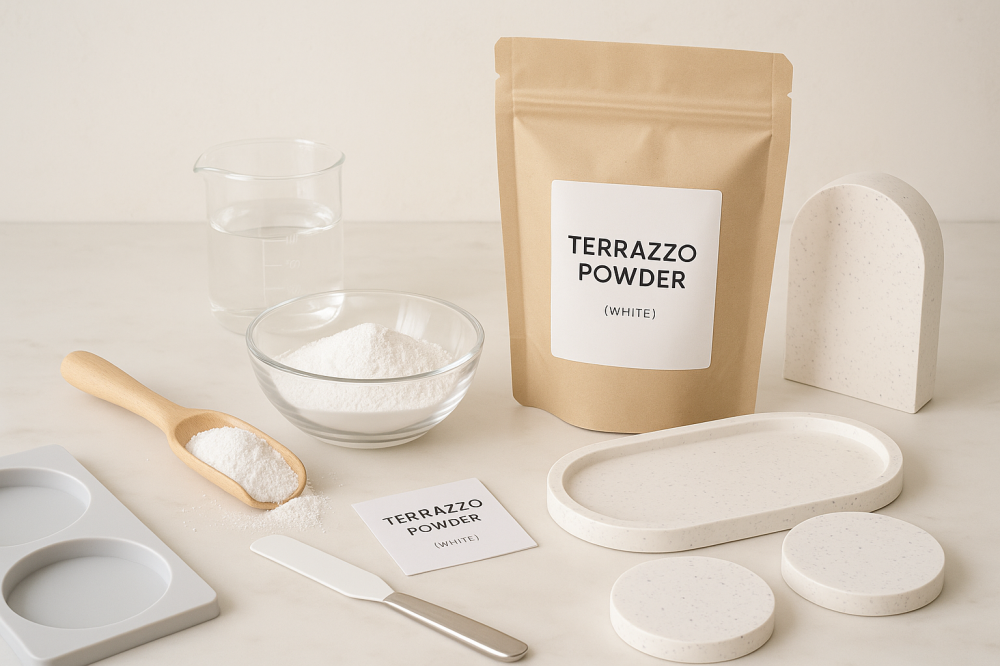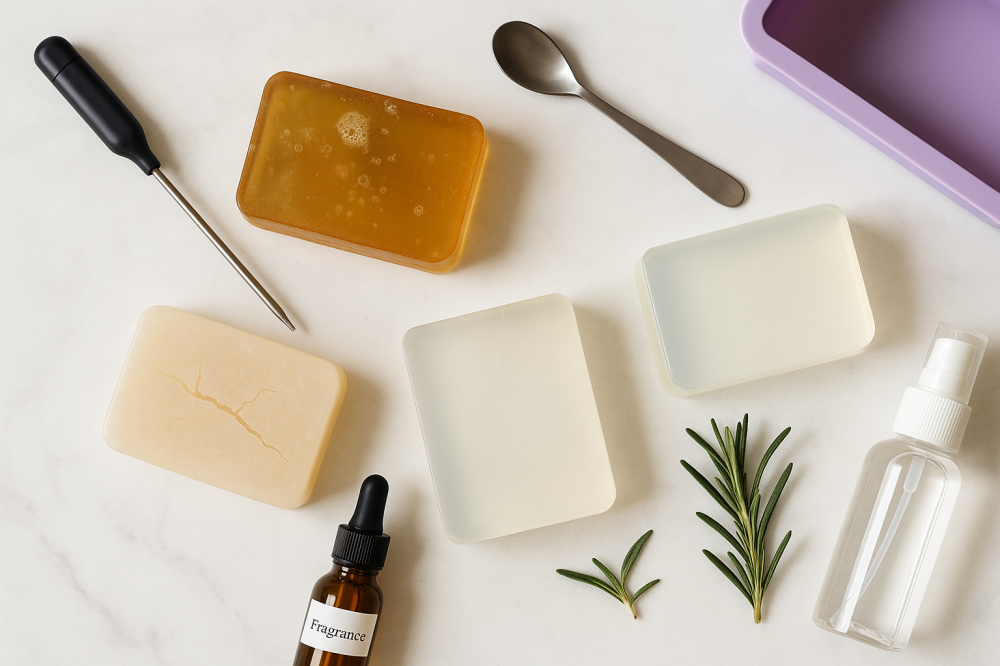Choosing the right mold determines the quality of the appearance , ease of demolding , and speed of production . This guide focuses on soluble and castable glycerin soap and explains simply when to choose silicone , when acrylic is preferable, and when you need 3D molds .
Before you choose: Quick questions to help you decide
- Do you want glossy surfaces and sharp edges , or a smooth, creamy look?
- Do you work in layers or incorporate internal elements (flowers/sculptures)?
- Do you need a single, distinctive piece or to produce a large quantity quickly?
- Is the shape a simple geometric shape or a complex three-dimensional shape with a 360° angle?
First: Silicone molds
Why choose it?
- Flexible and easy to disassemble, even with fine details.
- You don't usually need separating agents; the soap slides off smoothly after it hardens.
- Excellent for layering and integrating internal elements; withstands temperature changes well.
- Available in many sizes and shapes, and featuring multi-cavity molds for rapid production.
When should I use it?
- When you want clear layers and blending of herbs/figures without bubbles.
- When you need irregular shapes or soft details.
- For both beginner and advanced projects.
Warnings and care
- Avoid using sharp tools when dismantling so as not to scratch the walls.
- Wash with lukewarm water and mild soap, and dry completely.
- Store them flat and without bending; do not place weight on them so that they do not become deformed.
- Light-colored or transparent molds make it easier to monitor bubbles during pouring.
Common mistakes and quick fixes
- Dull/matte edges: The mold is scratched or unclean; clean it gently, and if the dullness persists, choose a mold with a polished surface.
- Cracks or fractures when unscrewing: The soap is still warm; let it cool completely and unscrew it in stages.
- Bubbles at the finer details: Spray with alcohol before pouring, and give the mold a light shake to release the air.
Mold care and storage
- Silicone: Gentle washing, thorough drying, flat storage away from heat and weight.
Quick checklist before buying
- Does the mold fit the size of the piece you want (palm of hand/hospitality soap/large gift)?
- Do you need multiple cavities for rapid production?
- Does the template match the visual result (transparency/sharp edges/three-dimensional)?
- Can you clean and store it easily and without damage?
- Do you have a safe disassembly plan that protects the details and doesn't damage the mold?
Summary
Choosing the right mold makes everything easier: silicone for flexibility, layering, and blending; acrylic for sharp edges and shine; and 3D molds for stunning sculptures. First, define your visual and production goals, then choose the mold that best serves them—and you'll have perfectly shaped soaps…from the very first pour.




